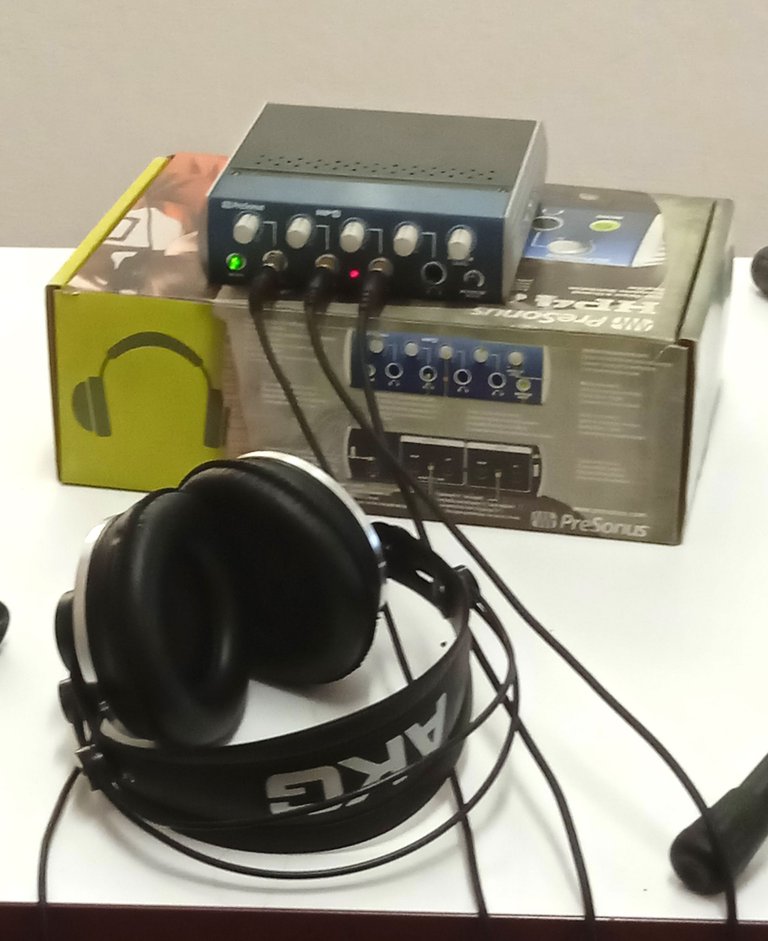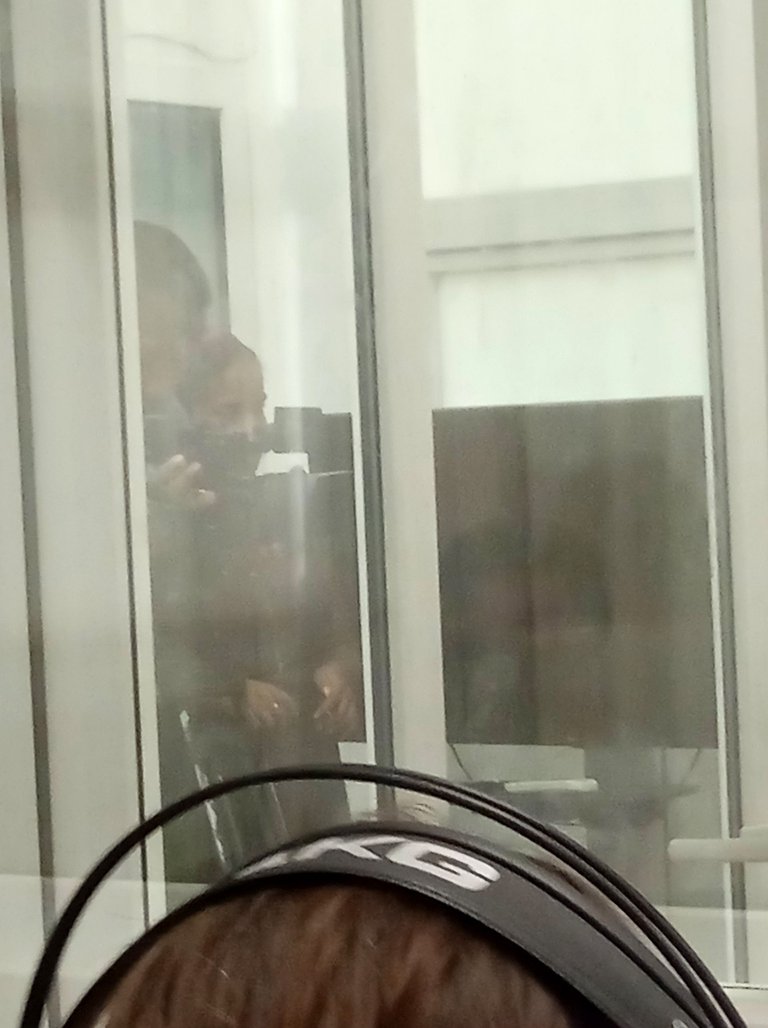English - Click here
A weekee-greeting to all Hivers!! Well, here I made a summary like the previous one, but about the last two days of the course. I apologize for the delay of the post, this weekend I've been busy (in the next post I'll tell you about Saturday's fun trip).
On the fourth day the professor explained specific things about the EQs and showed us the presets that they had by default for instruments of certain musical genres. He clarified that sometimes they could be useful, but ideally we should adjust the EQs ourselves because, for example, not all pianos in classical music songs have to feel the same or express the same emotions; it all depends on the song, the artist's intentions and the feelings it causes in you.
We had already finished the learning classes, what we had to do was to apply everything, process which name stands for mixing. Before starting with the practical exercises, the teacher took the opportunity to copy to our USB flash drives some digital courses on musical training, to accustom our ears to clearly recognize specific frequency bands in a song, frequency bands being boosted by equalizers and filters being applied to frequency bands.
During the wait the same singing guys came back into the booth to make jokes or sing, just to add some fun to the atmosphere. Coincidentally some cameramen from national television came in and filmed them from outside. I took a picture of them from a distance hahaha.
The teacher called everyone once the copies were finished and prepared test projects in the software (I asked what it was called, it was Logic Pro). The first song he chose was Solo Tú by Planeta Tortuga, but with the recordings of the instruments separated and unmodified, even with their original recording volume. I love the song, I decided to sign up to do the mix with three other guys.
I'll tell the truth, we didn't concentrate much and often laughed at ourselves. One of the group became obsessed with compressors and applied them to all the sounds with suitable presets, and some not suitable but we thought they sounded good. The rest of us started experimenting with the EQs to see 'if the thing would improve'. We made changes, regardless of the integrity of the instruments in the song...
After an hour of 'arduous' attempts, we played the whole piece. We thought it sounded pretty decent, but the teacher mindlessly graded us with a dry "Not even close" grade. Our laugh killed us XD.
He got us out of our chairs and in less than ten minutes, without taking his eyes off the monitor and with ears isolated from the world, he did a mix of that song with noticeable improvements, I'd say almost the same as the officially mixed song. He explained to us that as a first attempt it wasn't too bad (at least it didn't suck more than enough). Besides distracting us a lot we missed the initial idea of what the song was like or felt like, as we worked on everything separately with the goal of making each thing sound clear or better. It is a process where what you feel is what matters most, and clearly there must be a harmony between the instruments to understand what we feel.
On the fifth and last day, the teens who had not participated were arranged in two groups to make the mixes of the missing projects. The teacher did the same and gave his clarifications, although nobody did a bad job (much better than what we did in my opinion). Finally we said goodbye and thanked the teacher for everything.
I wish I could have another experience like that and visit the center one more time!
¡¡Un weekee-saludo a todos los Hivers!! Bueno, aquí hice un resumen como el anterior, pero de los últimos dos días del curso. Me disculpo por el retraso del post, este fin de semana he estado ocupada (en el post siguiente les contaré sobre el divertido viaje del sábado).
El cuarto día el profesor nos explicó cosas específicas de los ecualizadores y mostró sin mucho detalle los presets (o pre-ajustes) que traían ellos por defecto para instrumentos de determinados géneros musicales. Nos aclaró que a veces podían ser útiles, pero lo ideal era que ajustáramos los ecualizadores nosotros mismos pues, por ejemplo, no todos los pianos en canciones de música clásica tienen que sentirse igual o expresar las mismas emociones; todo depende de la canción, las intenciones del artista y los sentimientos que cause en ti.

Ya habíamos terminado las clases de aprendizaje, lo que tocaba era aplicar todo lo aprendido, o en pocas palabras, mezclar. Antes de comenzar con los ejercicios prácticos, el profe aprovechó para copiar a nuestras memorias USB unos cursos digitales sobre entrenamiento musical, para acostumbrar a nuestros oídos a reconocer con claridad bandas de frecuencia específicas de un sonido o música, bandas de frecuencia potenciadas por ecualizadores y cuando hay filtros aplicados a ellas.
Durante la espera los mismos muchachos cantantes volvieron a meterse en la cabina para hacer chistes o cantar, solo para prender diversión al ambiente. Casualmente unos camarógrafos de la televisión nacional entraron y los grabaron desde fuera. Les tiré una foto de lejitos jajaja.

El profe llamó a todos una vez terminadas las copias y preparó proyectos de prueba en el software (pregunté cómo se llamaba este, era Logic Pro). Como primera canción eligió Solo Tú de Planeta Tortuga, pero con las grabaciones de los instrumentos separadas y sin modificaciones, incluso con su volumen original de grabación. Me encanta la canción, decidí apuntarme para hacer la mezcla junto con otros tres muchachos.
Voy a decir la verdad, no nos concentramos mucho y nos reímos con frecuencia de nosotros mismos. Uno del grupo se obsesionó con los compresores y los aplicó a todos los sonidos con presets adecuados, y algunos no adecuados pero que creíamos que se oían bien. Los demás nos pusimos a experimentar con los ecualizadores a ver ‘si la cosa mejoraba’. Hicimos cambios, sin tener en cuenta la integridad de los instrumentos en la canción...

Después de una hora de ‘arduos’ intentos, reprodujimos toda la pieza. Pensamos que sonaba bastante decente, pero el profesor sin pensar nos calificó con una seca nota de “Ni se acercaron”. Morimos de risa XD.
Nos levantó de las sillas y en menos de diez minutos, sin apartar la vista del monitor y con oídos aislados del mundo, hizo una mezcla de esa canción con notables mejoras, diría que casi igual a la canción oficialmente mezclada. Nos explicó que como primer intento no estaba tan mal (al menos no apestaba más de lo suficiente). Además de distraernos mucho se nos perdió la idea inicial de cómo era la canción o sentíamos la canción, pues trabajamos todo por separado con el objetivo de que cada cosa se escuchara claro o mejor. Es un proceso donde lo que sientes es lo que más importa, y claramente debe existir una armonía entre los instrumentos para comprender qué es lo que sentimos.
El quinto y último día los muchachos que no habían participado se acomodaron en dos grupos para hacer las mezclas de los proyectos que faltaban. El profe hizo lo mismo y dio sus aclaraciones, aunque nadie hizo un mal trabajo (mucho mejor que lo que hicimos nosotros en mi opinión). Finalmente nos despedimos y agradecimos al profesor por todo.
¡Ojalá tener otra experiencia como esa y visitar el centro nuevamente!
All photos by me, taken with my phone. English supported by Deep L.

Congratulations @anima-shot! You have completed the following achievement on the Hive blockchain And have been rewarded with New badge(s)
Your next target is to reach 300 upvotes.
You can view your badges on your board and compare yourself to others in the Ranking
If you no longer want to receive notifications, reply to this comment with the word
STOPThx!!!
ay
Creo que de todas formas ahora tú con este taller sabes más que yo sobre el tema de mezcla de sonido 😂
Jajajajaja, ¡Nahhh!